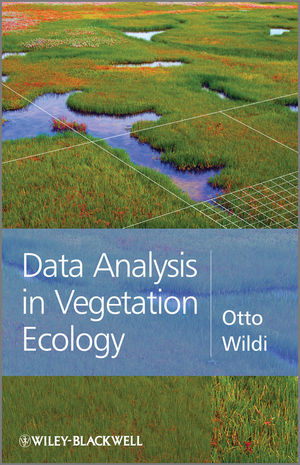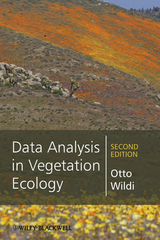
Data Analysis in Vegetation Ecology
Wiley-Blackwell (Verlag)
978-0-470-66101-7 (ISBN)
- Titel ist leider vergriffen;
keine Neuauflage - Artikel merken
Preface. List of Figures. List of Tables. 1 Introduction. 2 Patterns in Vegetation Ecology. 2.1 Pattern recognition. 2.2 Interpretation of patterns. 2.3 Sampling for pattern recognition. 3 Transformation. 3.1 Data types. 3.2 Scalar transformation and the species enigma. 3.3 Vector transformation. 3.4 Example: Transformation of plant cover data. 4 Multivariate Comparison. 4.1 Resemblance in multivariate space. 4.2 Geometric approach. 4.3 Contingency testing. 4.4 Product moments. 4.5 The resemblance matrix. 4.6 Assessing the quality of classifications. 5 Ordination. 5.1 Why ordination? 5.2 Principal component analysis (PCA). 5.3 Principal coordinates analysis (PCOA). 5.4 Correspondence analysis (CA). 5.5 The horseshoe or arch effect. 5.6 Ranking by orthogonal components. 6 Classification. 6.1 Group structures. 6.2 Linkage clustering. 6.3 Minimum-variance clustering. 6.4 Average-linkage clustering: UPGMA, WPGMA, UPGMC and WPGMC. 6.5 Forming groups. 6.6 Structured synoptic tables. 7 Joining Ecological Patterns. 7.1 Pattern and ecological response. 7.2 Analysis of variance. 7.3 Correlating resemblance matrices. 7.4 Contingency tables. 7.5 Constrained ordination. 8 Static Explanatory Modelling . 8.1 Predictive or explanatory? 8.2 The Bayes probability model. 8.3 Predicting wetland vegetation (example). 9 Assessing Vegetation Change in Time. 9.1 Coping with time. 9.2 Rate of change and trend. 9.3 Markov models. 9.4 Space-for-time substitution. 9.5 Dynamics in pollen diagrams (example). 10 Dynamic Modelling. 10.1 Simulating time processes. 10.2 Including space processes. 10.3 Processes in the Swiss National Park (SNP). 11 Large Data Sets: Wetland Patterns. 11.1 Large data sets differ. 11.2 Phytosociology revisited. 11.3 Suppressing outliers. 11.4 Replacing species with new attributes. 11.5 Large synoptic tables? 12 Swiss Forests: A Case Study. 12.1 Aim of the study. 12.2 Structure of the data set. 12.3 Methods. 12.4 Selected questions. 12.5 Conclusions. Appendix A On Using Software. A.1 Spreadsheets. A.2 Databases. A.3 Software for multivariate analysis. Appendix B Data Sets Used. References. Index.
| Zusatzinfo | Illustrations, maps |
|---|---|
| Verlagsort | Hoboken |
| Sprache | englisch |
| Maße | 165 x 241 mm |
| Gewicht | 504 g |
| Einbandart | gebunden |
| Themenwelt | Naturwissenschaften ► Biologie ► Botanik |
| Naturwissenschaften ► Biologie ► Ökologie / Naturschutz | |
| ISBN-10 | 0-470-66101-1 / 0470661011 |
| ISBN-13 | 978-0-470-66101-7 / 9780470661017 |
| Zustand | Neuware |
| Haben Sie eine Frage zum Produkt? |
aus dem Bereich



